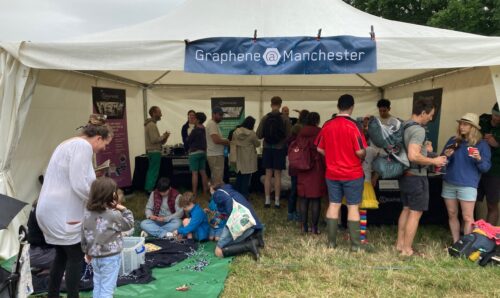Biosensors, drug delivery and diabetes
Research 21 March 2016
Joe Butcher a PhD student in the Graphene NOWNANO Centre for Doctoral Training (CDT) programme. Talks to us about his work on biosensors and how they could revolutionise medical applications.
Can you give an outline of the kind of research that you do (in layman’s terms), and particularly how it relates to graphene?
I’m trying to make a biosensor which will have on one side an enzyme, or sensing molecule, which could detect glucose for example, and on the other side would have something like insulin. Effectively, graphene helps to combine these two onto a single platform which could release insulin when glucose is detected. Graphene cuts out the middle-man between sensing and administering therapy.
Why is it important that the material is graphene?
Because graphene is conductive, and we can functionalise it. If we can create a way to get both the enzyme (in this case glucose) and the therapeutic molecule (in this case insulin) on to the same sheet of graphene, then when glucose is detected there would be a current generated, and from that current you could release therapeutic insulin. So it’s a very targeted biosensor.
So can you say more about the possible applications of this?
Sure. This doesn’t only need to be with glucose. If I can do this with one enzyme, it could potentially be done with others. I’ve also been working with cholesterol too, so this could be applied to provide medicine for high cholesterol conditions, and this would be very targeted. In an ideal world – and we’ll see if we can get to this point in the future – you’d be able to leave this biosensor in contact with the bloodstream. Diabetics have to treat themselves several times a day, but if there was a way to set this up, it would be able to regulate [blood-sugar] by itself, which could reduce the frequency of treatment a great deal.
How did you come to your interest in this project?
When I finished my undergrad degree in physics, and the CDT was a very good way to expand my horizons. I decided I wanted to do something which would really be useful. I was looking at PhDs in astronomy for example, which is very interesting, but I wanted my work to have obvious practical applications.
What motivated your interest in physics to begin with?
As a teenager I felt like Physics offered the best opportunity to learn the most about the world around me.
And do you still feel as motivated to do this research work now as you were when you started?
Absolutely. It’s really exciting to be at the cutting edge, using state of the art techniques, and being at the forefront of the science. Some of the things we find in this work are completely new. In nanoscience, and with graphene in particular, there is so much that hasn’t been discovered yet, so most of your results are really novel, and that’s really exciting.
What’s the best thing, and the worst thing, about your day-to-day research?
The best thing is that the work is so new. The conditions could change so often, and everything is so variable, that results are often very novel. That variability is also it’s downfall! You’re never completely certain about what you’ve got. Graphene is difficult to characterise, because it’s so incredibly small. As a result, the work can sometimes be really painstaking.
What are your thoughts on The University of Manchester as an institution?
I was here for undergrad too, and there were lots of options available to me when I graduated, with the CDT as just one of them. The CDT is also very open. Normally programs decide on topics before you begin the course, but in this program we were able to do some training, and then define our own direction for our research, which was really interesting.
The university as a whole is so large and such a good institution, that there is always someone around with the expertise to help you get your work done. There is a real community fostered among the CDT students, and we make up a good proportion of all the graphene research work carried out at the university, so it’s a really good place to be a part of.
Do you think the plans for the Graphene Engineering Innovation Centre (GEIC) are an important part of the growth of graphene research here?
Definitely. There is a real difficulty communicating some of the ideas we have about graphene between the scientists and industry, who will apply those ideas. The GEIC could be very important in bridging that gap.
Where do you think graphene development will go in the next 5 years, and in the next 20 years?
In the next five years the applications around electronics – like the graphene light bulb – will be significant. They will also probably work out some production difficulties in that time-frame too. Over the next twenty years, the pharmaceutical applications – like the kinds of work I’m doing in my research now – could really begin to become available. That’s one of the areas which is not reported on to the public as much. People don’t know as much about the potential for medical applications connected to graphene.
BiomedicinegrapheneGraphene NOWNANOHealthNational Graphene Institute





Leave a Reply